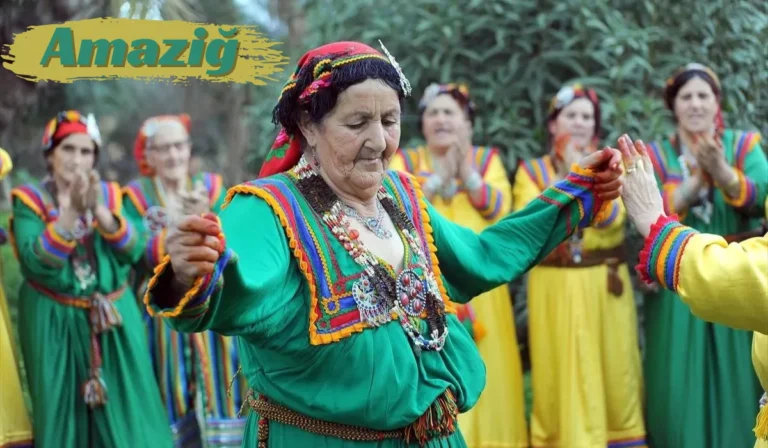The Amaziğ, often referred to as Berbers, are an indigenous people of North Africa with a rich history and vibrant culture that spans thousands of years. This article delves into the origins, traditions, and contemporary issues faced by the Amaziğ, highlighting their significant contributions to the cultural tapestry of the region.
Origins of the Amaziğ
Historical Background
The Amazi’ğ people have inhabited North Africa for millennia, with their roots tracing back to prehistoric times. Archaeological evidence suggests that they were among the first inhabitants of the region, with their presence documented in ancient texts by Greek and Roman historians. The term “Amazi’ğ ” itself means “free man” or “noble man,” reflecting their enduring spirit and identity.
Language and Dialects
The Amazi’ğ language, known as Tamazight, belongs to the Afro-Asiatic language family. It has several dialects, including Tachelhiyt, Tarifit, and Tashelhiyt, which vary across regions in Morocco, Algeria, Tunisia, and Libya. In 2011, Morocco recognized Amaziğ as an official language, marking a significant step towards preserving their linguistic heritage.
Cultural Traditions
Art and Craftsmanship
Amaziğ culture is renowned for its intricate art and craftsmanship. Traditional crafts include weaving, pottery, and jewelry making, often characterized by vibrant colors and geometric patterns. The use of natural materials, such as wool and clay, reflects a deep connection to the land and its resources.
Music and Dance
Music plays a vital role in Amazi’ğ culture, with various styles and instruments that vary by region. The use of the guembri (a three-stringed instrument) and the bendir (a frame drum) is common in traditional music. Festivals often feature lively dances that celebrate community, harvests, and important life events.
Festivals and Celebrations
The Amaziğ calendar is filled with festivals that celebrate seasonal changes and agricultural cycles. One of the most notable is Yennayer, the AmAmazi’ğ New Year, celebrated on January 12. This festival includes feasting, music, and traditional rituals that honor ancestors and nature.
Contemporary Issues
Political and Social Challenges
Despite their rich heritage, the Amazi’ğ people have faced significant challenges in recent decades. Many have struggled for recognition and rights within their respective nations, often feeling marginalized in political and social spheres. Activism has surged, particularly in Morocco and Algeria, where Amazi’ğ movements advocate for cultural rights and political representation.
Preservation of Culture
The preservation of Amaziğ culture is a pressing concern, especially in the face of globalization and urbanization. Efforts to revitalize the Amaziğ language and traditions are underway, with educational programs and cultural initiatives aimed at younger generations. The establishment of cultural centers and festivals has also helped promote awareness and appreciation of Amazi’ğ heritage.
Conclusion
The Amaziğ people are a testament to resilience and cultural richness in North Africa. Their history, traditions, and ongoing struggles for recognition reflect a broader narrative of indigenous rights and cultural preservation. As the world becomes increasingly interconnected, it is vital to celebrate and support the Amaziğ heritage, ensuring that their unique identity continues to thrive for generations to come.
If you want to read more, visit our blog page. We have more topics!
FAQs
Who are the Amaziğ people?
The Amaziğ, also known as Berbers, are an indigenous ethnic group native to North Africa, primarily found in Morocco, Algeria, Tunisia, and Libya. They have a distinct language, culture, and history that dates back thousands of years.
What language do the Amaziğ speak?
The Amazi’ğ language, or Tamazight, is part of the Afro-Asiatic language family and has several dialects, including Tachelhiyt, Tarifit, and Tashelhiyt. It was recognized as an official language in Morocco in 2011.
What are some traditional Amaziğ crafts?
Amazi’ğ crafts include weaving, pottery, and jewelry making. These crafts often feature intricate designs and vibrant colors, reflecting the cultural identity of the Amaziğ people.
What is Yennayer?
Yennayer is the Amaziğ New Year, celebrated on January 12. It is marked by various festivities, including feasting, music, and rituals that honor ancestors and nature.
What challenges do the Amaziğ face today?
The Amaziğ people face political and social challenges, including marginalization and struggles for cultural recognition. Activism has increased in recent years, advocating for rights and representation in their respective countries.

